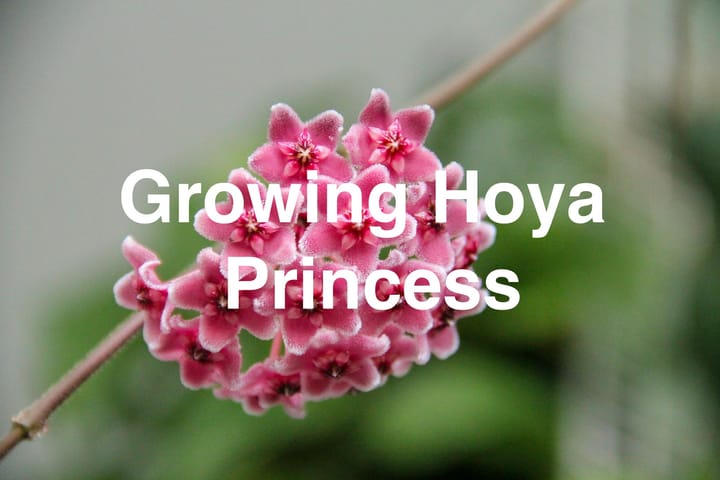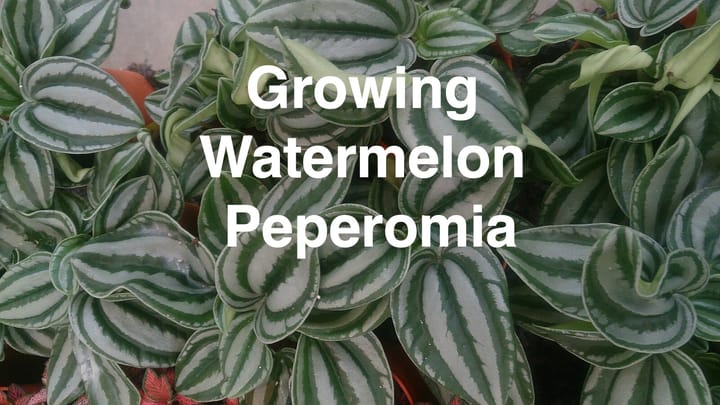How to Grow Alocasia
Alocasia adds a touch of the tropics to your indoor garden.
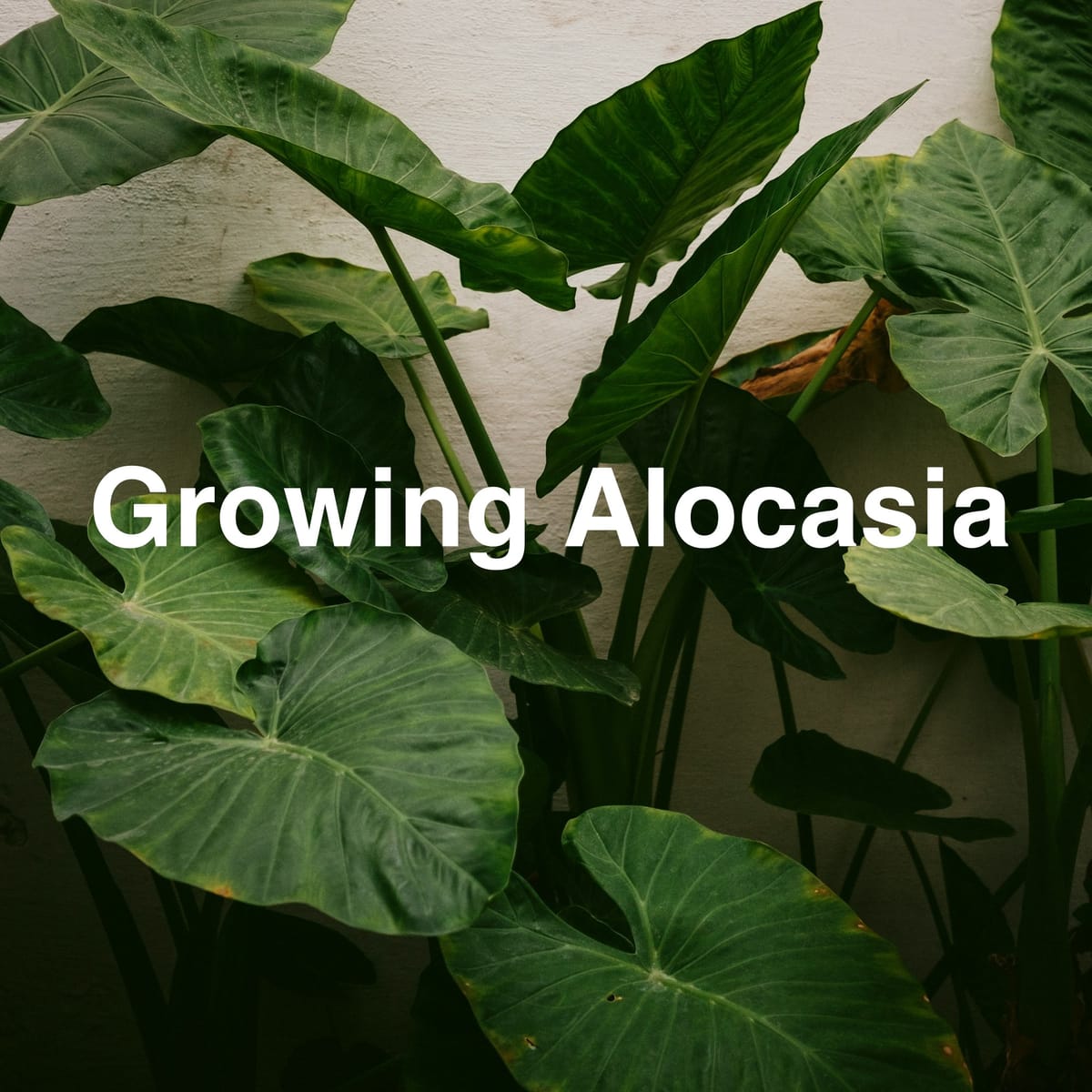
This family of plants is valued for its large, arrow or heart-shaped leaves, which can introduce a dramatic flair to your home or office.
Alocasias are native to tropical and subtropical Asia to Eastern Australia. They need a warm, humid environment, along with the right soil and water balance.
As a tropical plant, Alocasia does well indoors where these conditions can be replicated or controlled.

Providing the right care from the start sets a solid foundation for a healthy and stunning plant.
Key Takeaways
- Provide Alocasia with a warm and humid environment akin to its tropical origin.
- Ensure the soil is well-draining yet retains moisture for optimal growth.
- Maintain routine care, including proper watering, feeding, and regular checks for pests.
Understanding Alocasia Basics
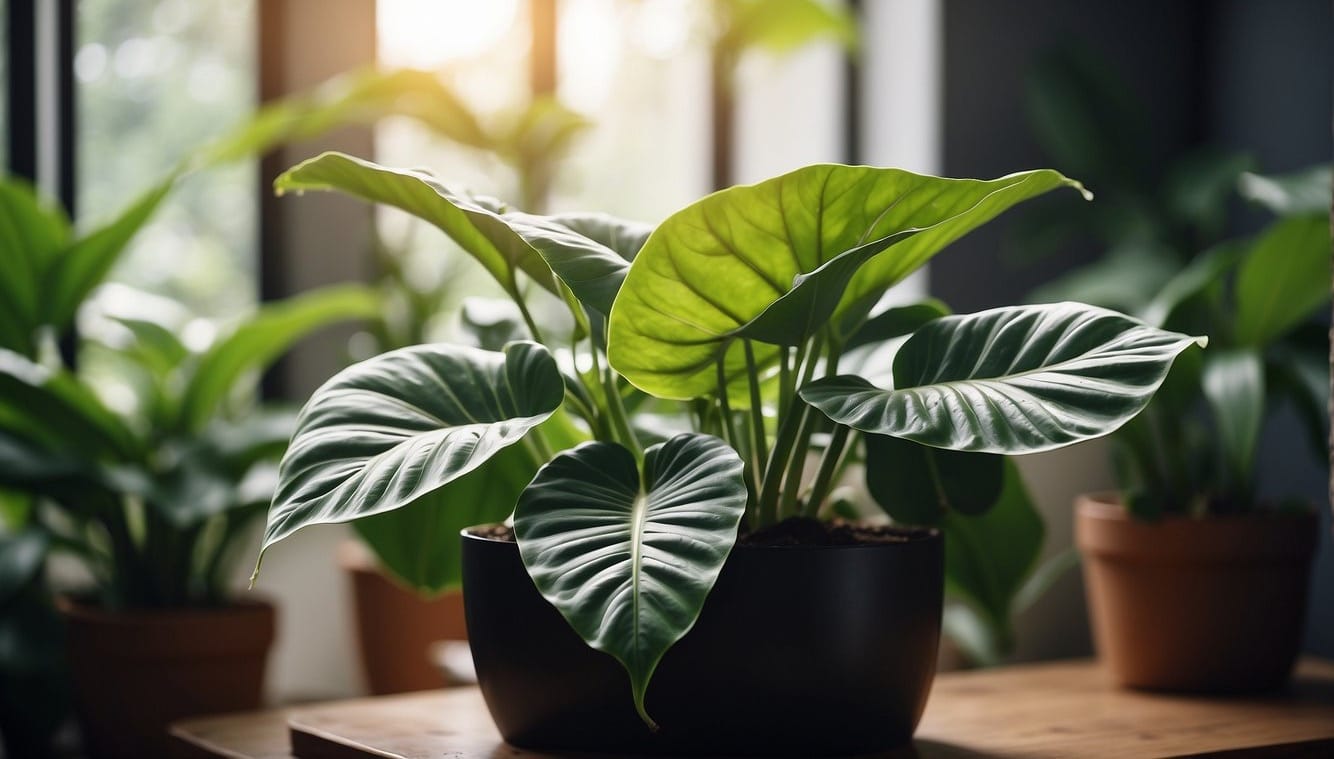
Alocasia plants, often known as "Elephant Ear" or "African Mask Plant," are tropical perennials valued for their distinctive foliage.
Different Alocasia Varieties
There is a diverse array of Alocasia varieties, each with unique features. Some popular types include:
- Alocasia amazonica: Often referred to as the "African Mask Plant," it has dark green leaves with prominent veins.
- Alocasia macrorrhizos: Known for its large, elephant ear-shaped leaves.
- Alocasia wentii: Distinguished by glossy green tops and vivid purple undersides.
Varieties differ not only in appearance but also in their size and growth habits, making them versatile for various indoor and outdoor settings.
Native Habitats and History
Alocasia plants are native to tropical areas of Asia and Eastern Australia. These plants thrive under the conditions typical of a rainforest floor:
- Light: Bright, indirect light is preferred.
- Soil: They grow best in well-draining, slightly acidic soil.
- Climate: A warm and humid environment mimics their tropical origins.
Understanding these plants' history and native habitats is essential for creating the right conditions for your Alocasia at home.
Ideal Environmental Conditions
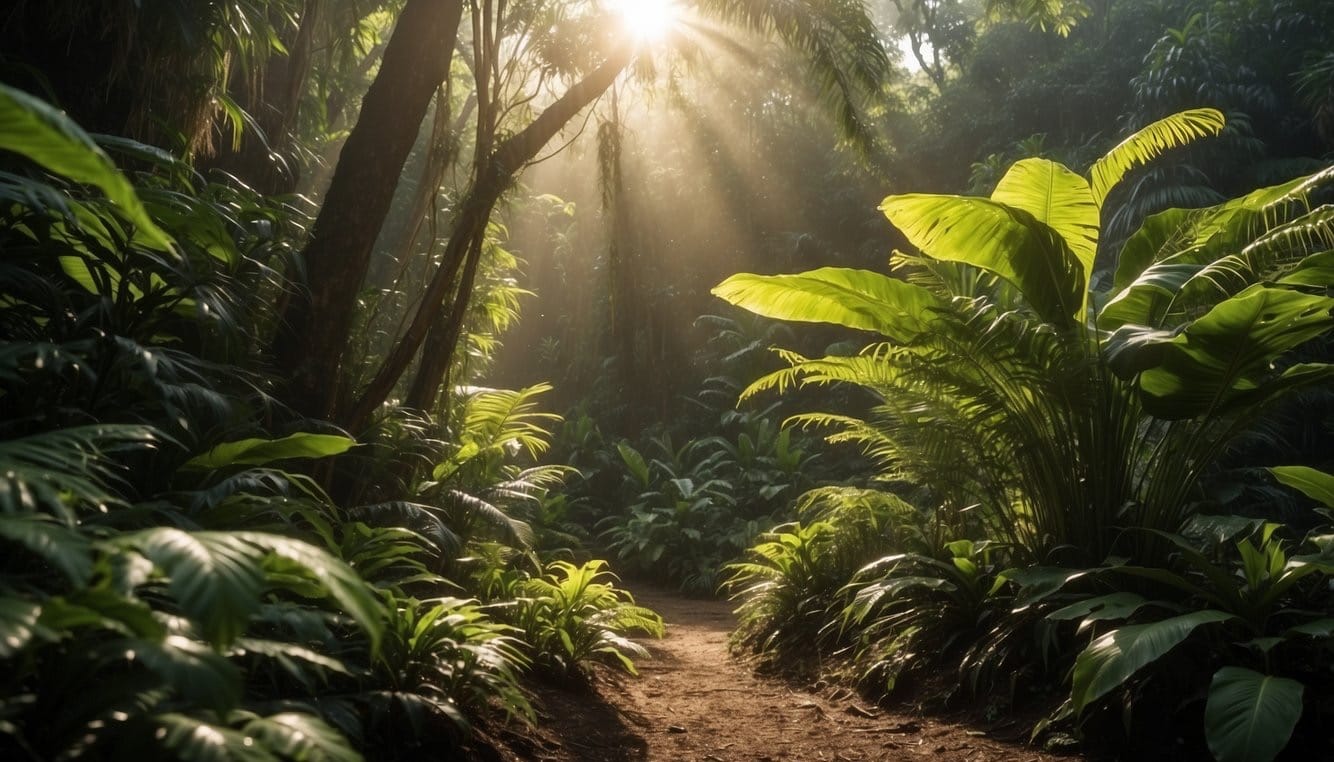
Creating the right environment is crucial for the health and growth of your Alocasia. It requires you to manage humidity, lighting, and temperature closely to mimic its native tropical habitat.
Maintaining Optimal Humidity
Alocasia thrives in high humidity, ideally between 60% to 80%. To achieve this, you can:
- Use a humidifier near your plant to maintain consistent moisture in the air.
- Place your Alocasia on a pebble tray with water, ensuring that the pot is not sitting in water.
- Position your Alocasia in a naturally humid room, like a bathroom, provided it has enough light.
Proper Lighting for Growth
Your Alocasia requires bright, indirect light to prosper. Direct sunlight can scorch its leaves, while low light may stunt its growth. Here are the best practices:
- Place your Alocasia near an east or north-facing window to avoid the harsh afternoon sun.
- Use sheer curtains to diffuse bright light during the summer and spring months when the light is more intense.
Temperature Range for Alocasia
Alocasia prefers a temperature range of 64°F to 82°F (18°C to 28°C). Here's how to maintain it:
- Keep your plant in a room that's consistently within this temperature range.
- Protect your Alocasia from cold drafts as well as drastic temperature changes, which can be harmful.
Soil and Water Requirements

Alocasia plants thrive in soil that balances moisture retention with effective drainage, and they require watering practices that keep the soil evenly moist without becoming waterlogged.
Choosing the Right Soil Mix
Select a well-draining potting mix that contains a high percentage of organic material. Additions like perlite or coarse sand can improve drainage capabilities. The ideal soil for Alocasia should be slightly acidic.
This soil environment supports healthy root development and allows for proper nutrient uptake.
- Components Ideal for Alocasia Soil:
- Organic material (e.g., peat moss, compost)
- Aerating agents (e.g., perlite, coarse sand)
- pH: Slightly acidic
Watering Techniques and Frequency
Water your Alocasia when the top 2 to 3 inches of soil feels dry to the touch. Use tap water that has been allowed to sit out, which helps dissipate chemicals such as chlorine that may harm the plant.
It is crucial to ensure even soil moisture levels while avoiding soggy conditions. During winter, when the plant enters dormancy, reduce the frequency of watering.
- Watering Checklist:
- Check the topsoil moisture
- Water until it flows from the drainage holes
- Do not let the plant sit in standing water
- Cut back on watering in the dormant period (winter)
Always use pots with adequate drainage to prevent the dangers of overwatering.
Planting and Potting Considerations
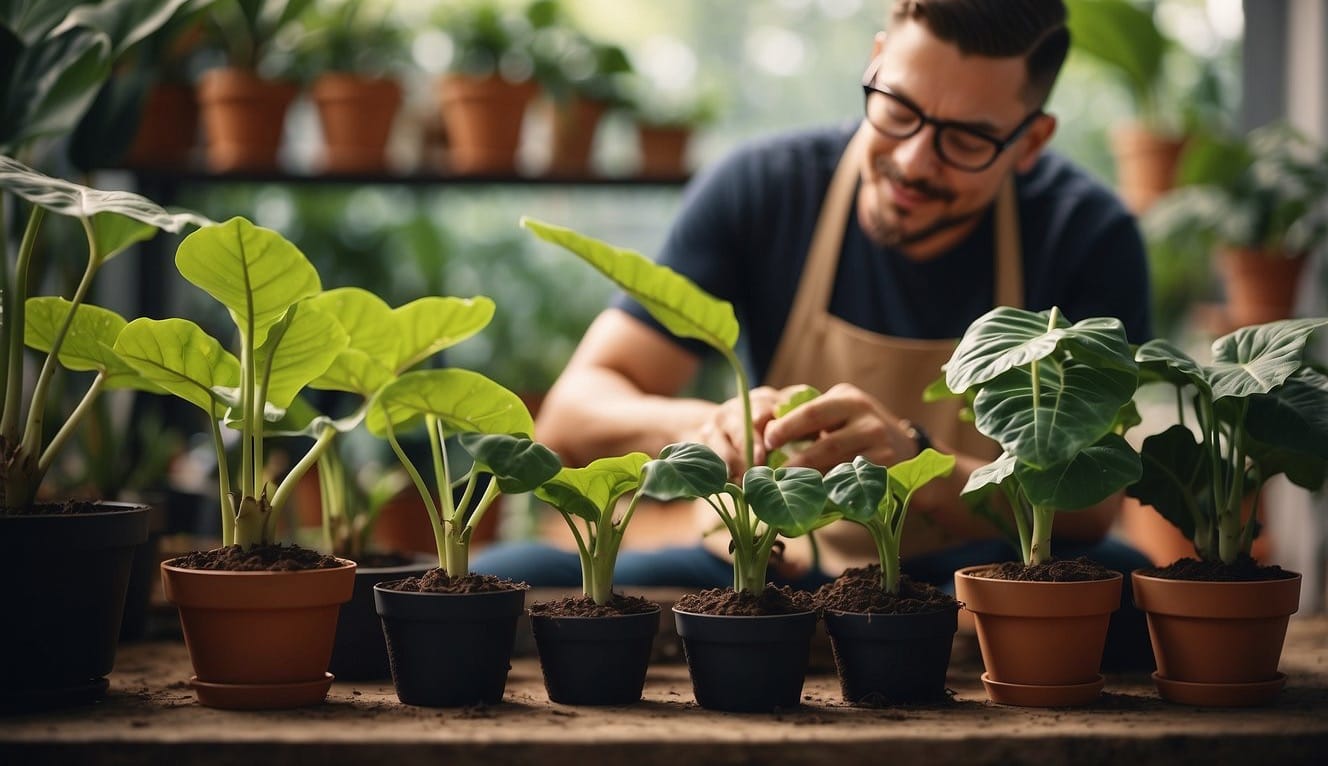
When you plant Alocasia, choosing the right container and potting mix is crucial to avoid common issues such as root rot. Proper drainage and timely repotting contribute greatly to your plant's health.
Selecting an Appropriate Container
Your Alocasia requires a container that supports adequate drainage to prevent water accumulation around the roots. Look for a pot with drainage holes at the bottom.
Containers can be made of various materials, but terracotta or ceramic pots are preferred due to their porous nature that assists in removing excess moisture.
The size should allow for about an inch or two of space around the roots to encourage growth.
Repotting and Root Health
Repot your Alocasia every two years or when rootbound, indicated by roots growing through the drainage holes.
Before repotting, inspect the roots and trim any that are brown or soft to prevent root rot.
Use a potting mix that retains moisture but drains well—consisting of a high-quality all-purpose potting mix with amendments like orchid bark, perlite, or coco coir to improve drainage.
When planting, ensure the crown of the plant sits about an inch above the soil surface to discourage moisture build-up around the stem.
Feeding and Fertilization

Proper feeding and fertilization are crucial for the thriving growth of your Alocasia. These plants are known to be heavy feeders, especially during their growth season, requiring a consistent supply of nutrients.
Nutrient Requirements During Growth
Alocasias demand a rich supply of nutrients when they're actively growing. They benefit from a balanced nutrient mix, particularly a fertilizer that includes equal parts nitrogen, phosphorus, and potassium (often referred to as N-P-K).
Slow-release fertilizers are advantageous as they supply a steady stream of nutrition over time.
- Use a balanced liquid fertilizer, ideally with a N-P-K ratio of 20-20-20, during growth.
- Ensure the soil is moist before applying liquid fertilizer to prevent root burn.
Fertilization Schedule
Your Alocasia's fertilization schedule should align with its growth pattern.
Fertilize every month during the growing season, which typically spans from spring to autumn. Here's a simplified schedule to help you stay on track:
- Spring to Summer: Fertilize once a month with a half-strength dilution of liquid fertilizer.
- Autumn to Winter: Reduce fertilization as growth slows down, and the plant enters dormancy.
Important Tips:
- Do not over-fertilize; excess can lead to nutrient burn. If this occurs, flush the soil with water to leach out excess fertilizer.
- Remember to reduce feeding frequency during the dormant winter months when growth is minimal.
Common Pests and Diseases
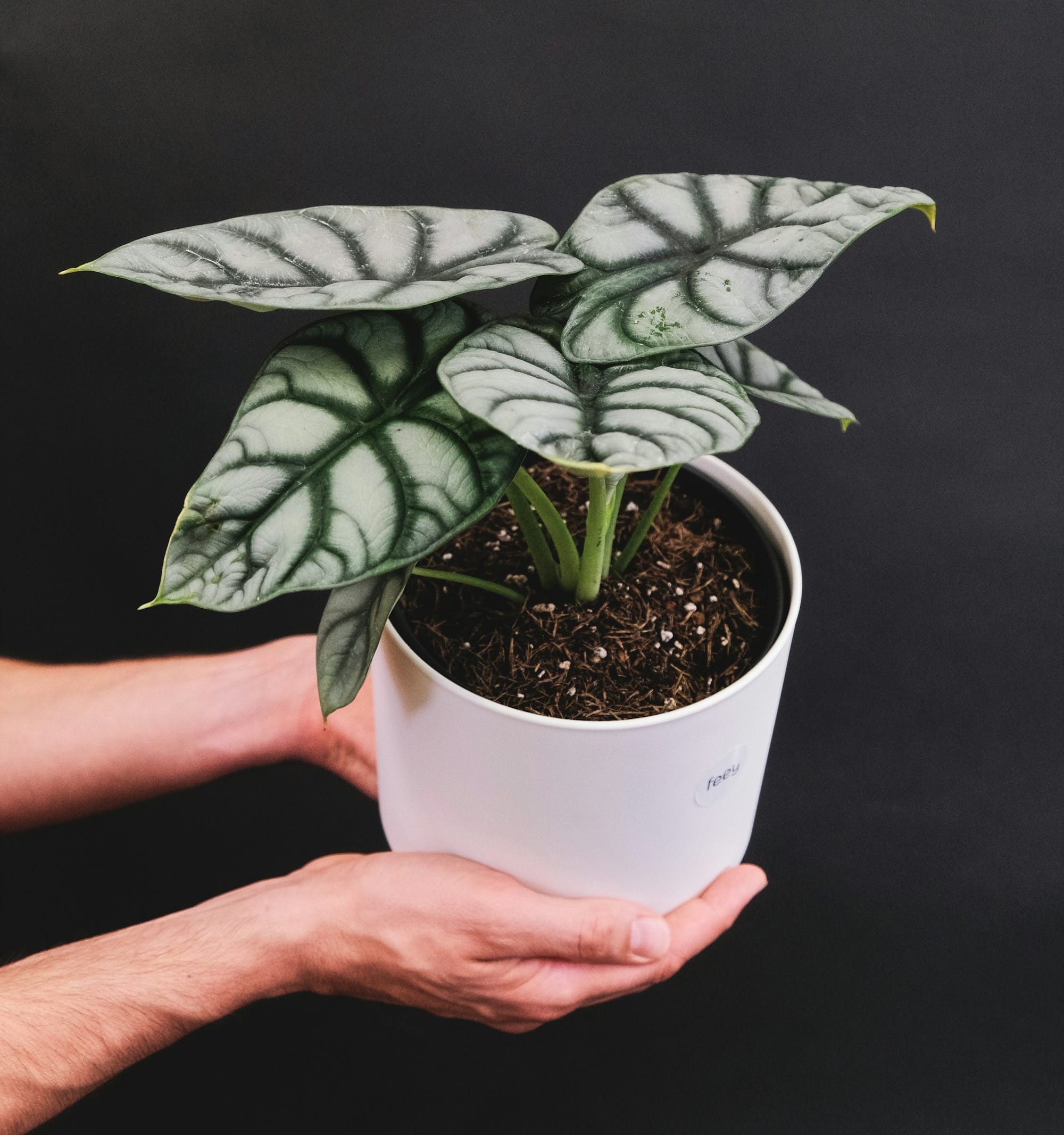
When growing Alocasia, you must be vigilant in spotting and managing pests and diseases that can affect the health of your plant. Learning to identify symptoms early and applying the appropriate treatments is crucial for maintaining a thriving Alocasia.
Identifying and Treating Infestations
Pests such as spider mites, mealybugs, and aphids are common adversaries of Alocasia plants. Here's how to deal with them:
- Spider Mites: Look for fine webs and yellowing leaves. Increase humidity and wash foliage regularly. For severe cases, use insecticidal soap or neem oil.
- Mealybugs: Identify these pests by their white, cottony residue. Remove them using a cotton swab dipped in rubbing alcohol and apply insecticidal soap as needed.
- Aphids: Visibly small and green, Aphids cluster on Alocasia leaves. Rinse the plant gently with water and use organic or chemical insecticides.
Disease Prevention and Management
Diseases usually manifest when conditions are unfavorable for Alocasia plants, such as improper watering or poor air circulation. Common diseases include:
- Root Rot: Prevent this by ensuring your Alocasia is in well-draining soil and not overwatering. If signs of rot appear, trim away the affected parts and repot in fresh soil.
- Leaf Spot: This disease causes discolored spots on leaves. Increase air circulation and reduce leaf wetness to manage leaf spot disease. Use fungicides if necessary.
Routine Care and Maintenance

To maintain your Alocasia's lush appearance and ensure its health, regular pruning and seasonal care adjustments are vital. A proper care regimen will prevent common issues like drooping leaves and promote vigorous growth.
Pruning for Healthy Growth
Your Alocasia will benefit from periodic pruning to remove any yellowed or dead leaves. This not only keeps your plant looking its best but also encourages the growth of new foliage.
- When to Prune: Prune as needed throughout the year, observing for signs of leaves that are damaged or have naturally completed their life cycle.
- How to Prune:
- Use clean, sharp scissors or pruning shears to make precise cuts.
- Cut the leaf at the base where it meets the main stem but avoid cutting into healthy tissue.
Seasonal Care Adjustments
Dormancy: During the winter months, your Alocasia may enter a period of dormancy where growth slows down.
- Watering During Dormancy:
- Reduce the frequency of watering to prevent root rot. Your Alocasia’s soil should be kept slightly moist but never soggy.
- Signs of Overwatering: If leaves begin to droop, it might indicate excess moisture.
Misting: Alocasia thrives in high humidity.
- To maintain the necessary humidity around your houseplant:
- Mist the leaves regularly, especially during dry seasons or if the indoor air is dry.
- Avoid misting to the point where water sits on the leaves for extended periods, as this can encourage fungal growth.
Propagation Methods
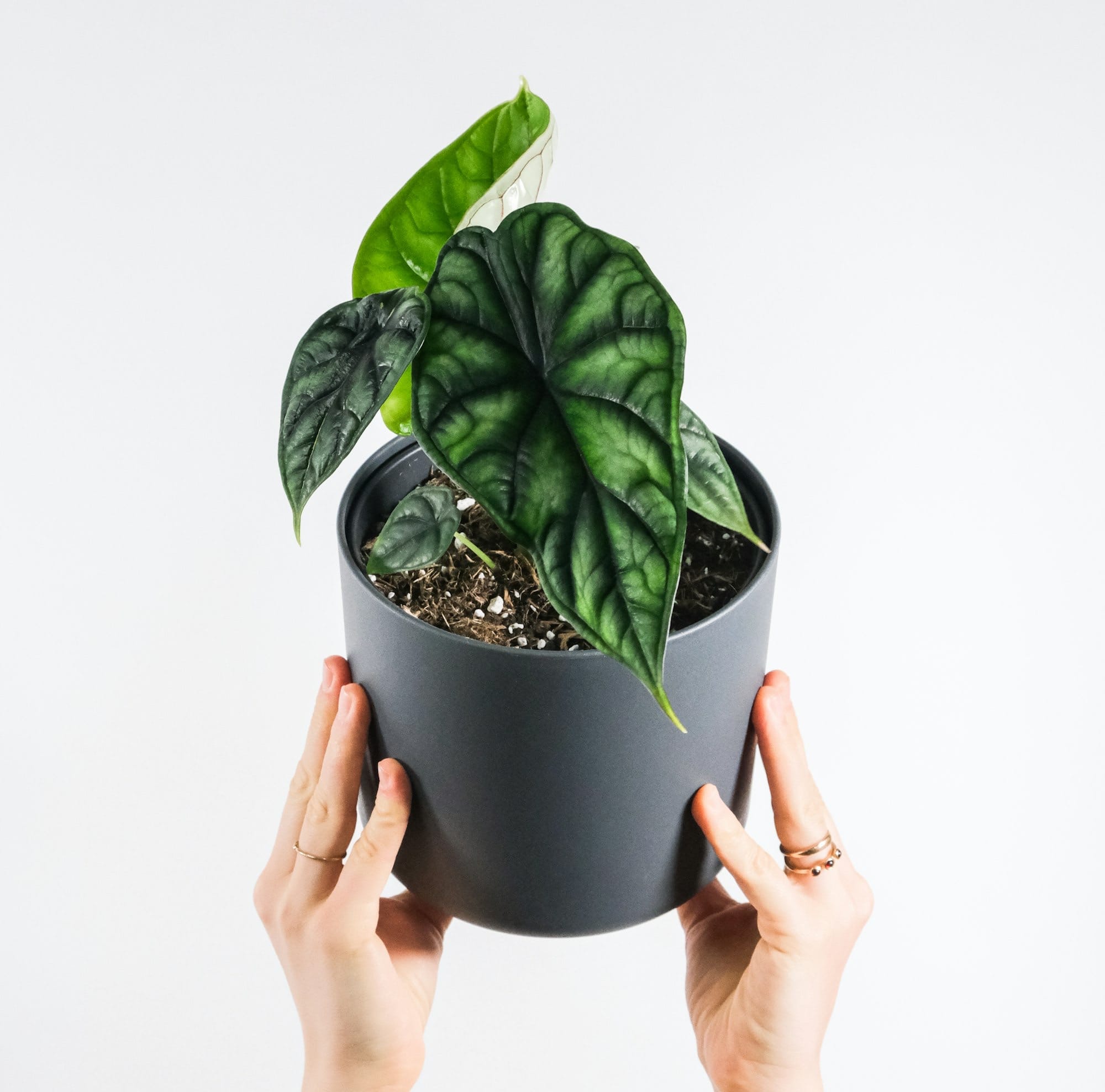
When growing Alocasia, propagation can be successfully achieved through the division of rhizomes. This method encourages a healthy start for new plants and ensures genetic consistency with the parent plant.
Division of Rhizomes
To propagate by division, wait for the spring or early summer when Alocasia plants are actively growing. Here's how you proceed:
- Unpot your Alocasia: Carefully remove your plant from its container to access the rhizomes.
- Locate the divisions: Identify the natural divisions or offsets which are sections of rhizomes with their own growth points.
- Separate the rhizomes: Gently tease apart the divisions, ensuring each has at least one growth point. Use a clean, sharp tool to make clean cuts if necessary.
Caring for New Plants
After division, your focus shifts to providing the optimal growing conditions for your new Alocasia plants. Follow these steps:
- Potting: Plant the separated rhizomes in pots filled halfway with a well-draining potting mix. Make a central hole to position the plant, then backfill with more soil.
- Environment: Keep the pot in a warm, bright area but out of direct sunlight which can scorch young plants.
- Watering: Maintain moist but not waterlogged soil, as excess moisture can lead to rot.
Frequently Asked Questions
What are the best practices for growing Alocasia from cuttings?
To grow Alocasia from cuttings, select a healthy leaf with a portion of the rhizome attached. Plant it in a well-draining soil mix and maintain high humidity and indirect light until it establishes.
How can I successfully grow Alocasia indoors?
For successful indoor growth, position your Alocasia in bright, indirect light and maintain a high humidity level. Ensure the potting mix stays moist but not waterlogged, and avoid drafts and sudden temperature fluctuations.
What are the necessary steps to propagate Alocasia in water?
When propagating Alocasia in water, use a clean cut from a healthy plant and submerge the cut end in water, avoiding leaf submersion. Change the water weekly and provide ample indirect light until roots develop, then transfer to soil.
How do you care for Alocasia bulbs for optimal growth?
Caring for Alocasia bulbs requires planting them in a warm, well-draining medium with the top of the bulb slightly exposed. Water sparingly until growth appears, then increase watering to keep the soil consistently moist.
What are the optimal watering frequencies for Alocasia plants?
Water your Alocasia when the top 2-3 inches of soil are dry, typically once a week. Adjust frequency based on seasonal growth periods and humidity levels, reducing watering in the winter dormancy period.
Is it possible to grow Alocasia variants fully submerged in water?
No, Alocasia plants cannot grow fully submerged in water. They are not aquatic plants. They require soil and air to thrive. However, you can propagate them in water before planting in the soil.
